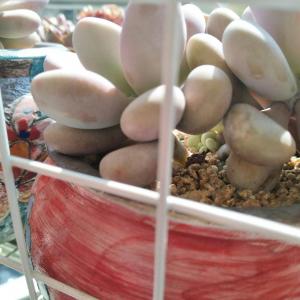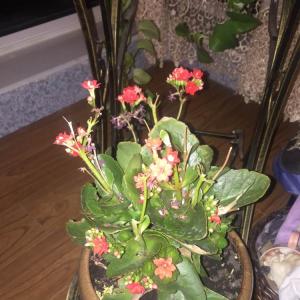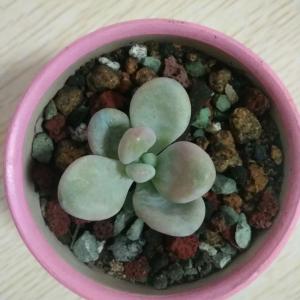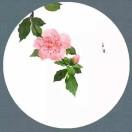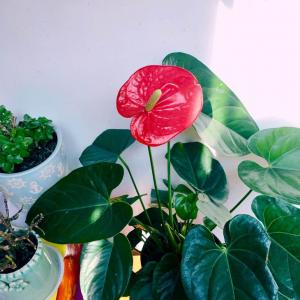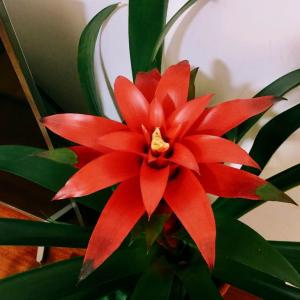文章
Miss Chen
2018年02月24日

Description: This perennial wildflower consists of a rosette, or clustered rosettes, of basal leaves from which one or more flowering stalks develop. The ascending to spreading basal leaves are 1-6" long and 1/8–1/2" (3-12 mm.) across; they areColonies of Flowering Plants dark green, linear-oblanceolate in shape, smooth along their margins, and mostly hairless. The leaves of plants that are under stress from drought may become grayish green. Individual flowerheads develop at the apex of unbranched stalks that are 4-12" high; these flowering stalks are more or less erect. The stalks are rather stout and more or less finely pubescent. Individual flowerheads span 1-1¾" across, consisting of 10-30 ray florets that surround a dense cluster of 50 or more disk florets. The petal-like rays of the ray florets are ¼–¾" long, bright yellow, oblong in shape, and divided into 3 blunt teeth at their tips. The tiny disk florets are golden yellow, tubular in shape, and lobed along their upper rims. Both ray and disk florets are fertile. Around the base of each flowerhead, there are green floral bracts (phyllaries) in 2-3 series. Individual floral bracts are about ¼" in length, finely pubescent, and oblong-ovate with rounded tips. The blooming period usually occurs from late spring to early summer. A colony of plants may bloom for about a month. The florets are replaced by small achenes that are angular and finely pubescent; they become mature during the summer. At the apex of each achene, there is a tiny crown of 5 or more chaffy scales that are lanceolate in shape. The achenes are distributed by gravity and wind, although they usually don't travel far from the mother plant. The root system consists of a short stout caudex that eventually branches, forming a cluster of plants from vegetative offsets.
Cultivation: The preference is full sun, well-drained mesic to dry conditions, and a gritty alkaline soil containing gravel or rocky material. This wildflower can be cultivated in rock gardens. The seeds require no winter dormancy and should be sowed during the same year that they are produced.
Range & Habitat: Lakeside Daisy is a rare native wildflower in Illinois, having been found in only Tazewell and Will counties (see Distribution Map). It is state-listed as 'endangered' and federally listed as 'threatened.' At one time, this wildflower was extirpated from the wild in Illinois, although it still existed in private gardens in the Chicago area. More recently, it has been successfully reintroduced in various natural areas of the state. The largest population in the United States exists in Marblehead Peninsula along Lake Erie in Ohio. Habitats consist of dry dolomite prairies and gravel prairies, gravelly hill prairies, sand-gravel terraces along major rivers, ledges along cliffs, and limestone quarries. This wildflower is found in rocky areas with sparse vegetation and can tolerate minor amounts of disturbance.

Faunal Associations: Both nectar and pollen are available from the flowerheads, which attract bees, flies, beetles, butterflies, and skippers. Floral bee visitors include bumblebees, small carpenter bees (Ceratina spp.), and Halictid bees. Cross-pollination is required because individual plants are genetically self-incompatible. Insects that feed on the Lakeside Daisy include grasshoppers and the larvae of an unidentified weevil; the latter feeds on the seeds. The flowering stalks are eaten occasionally by the White-Tailed Deer and Cottontail Rabbit. In the Western states, related species in the Hymenoxys/Tetraneuris complex are known to have toxic leaves that can poison cattle and sheep, however the toxicity of the more eastern Lakeside Daisy has not been determined.
Photographic Location: A botanical garden in the Chicago area. The photographs of the Lakeside Daisy were taken by Jim Ault (Copyright © 2010).

Comments: The Lakeside Daisy is an attractive plant. This wildflower is rare because of its restrictive habitat requirements and the limited distribution of its seeds. Lakeside Daisy is one of several spring-blooming species in the Aster family that have yellow flowerheads and rosettes of basal leaves. It can be distinguished from these other species by its narrow dark green leaves, unbranched flowering stalks, three-toothed rays, and achenes with tiny crowns of scales (rather than a tufts of hairs). Other closely related species exist in the Western states. The Lakeside Daisy is sometimes classified as var. glabra of the western Hymenoxys acaulis. However, this latter species differs by having fewer ray florets (less than 15), floral bracts (phyllaries) with awned pointed tips, and basal leaves that are gray-green with silky hairs.
Cultivation: The preference is full sun, well-drained mesic to dry conditions, and a gritty alkaline soil containing gravel or rocky material. This wildflower can be cultivated in rock gardens. The seeds require no winter dormancy and should be sowed during the same year that they are produced.
Range & Habitat: Lakeside Daisy is a rare native wildflower in Illinois, having been found in only Tazewell and Will counties (see Distribution Map). It is state-listed as 'endangered' and federally listed as 'threatened.' At one time, this wildflower was extirpated from the wild in Illinois, although it still existed in private gardens in the Chicago area. More recently, it has been successfully reintroduced in various natural areas of the state. The largest population in the United States exists in Marblehead Peninsula along Lake Erie in Ohio. Habitats consist of dry dolomite prairies and gravel prairies, gravelly hill prairies, sand-gravel terraces along major rivers, ledges along cliffs, and limestone quarries. This wildflower is found in rocky areas with sparse vegetation and can tolerate minor amounts of disturbance.

Faunal Associations: Both nectar and pollen are available from the flowerheads, which attract bees, flies, beetles, butterflies, and skippers. Floral bee visitors include bumblebees, small carpenter bees (Ceratina spp.), and Halictid bees. Cross-pollination is required because individual plants are genetically self-incompatible. Insects that feed on the Lakeside Daisy include grasshoppers and the larvae of an unidentified weevil; the latter feeds on the seeds. The flowering stalks are eaten occasionally by the White-Tailed Deer and Cottontail Rabbit. In the Western states, related species in the Hymenoxys/Tetraneuris complex are known to have toxic leaves that can poison cattle and sheep, however the toxicity of the more eastern Lakeside Daisy has not been determined.
Photographic Location: A botanical garden in the Chicago area. The photographs of the Lakeside Daisy were taken by Jim Ault (Copyright © 2010).

Comments: The Lakeside Daisy is an attractive plant. This wildflower is rare because of its restrictive habitat requirements and the limited distribution of its seeds. Lakeside Daisy is one of several spring-blooming species in the Aster family that have yellow flowerheads and rosettes of basal leaves. It can be distinguished from these other species by its narrow dark green leaves, unbranched flowering stalks, three-toothed rays, and achenes with tiny crowns of scales (rather than a tufts of hairs). Other closely related species exist in the Western states. The Lakeside Daisy is sometimes classified as var. glabra of the western Hymenoxys acaulis. However, this latter species differs by having fewer ray florets (less than 15), floral bracts (phyllaries) with awned pointed tips, and basal leaves that are gray-green with silky hairs.
0
0
文章
Miss Chen
2018年02月24日

Description: This perennial wildflower is 1-2' tall, sending up one or more stems from the base that are unbranched or sparingly branched. The stems are light green, terete, and hairy. Alternate compound leaves are widely spreading; they are odd-pinnate with 9-25 leaflets. Individual leaflets are up to 1" long and ¼" across; they are medium green to grayish green, oblong to narrowly elliptic in shape, and smooth along their margins. Upper surfaces of the leaflets are hairless to silky-hairy, while their lower surfaces are pubescent to silky-hairy. Each leaflet has a prominent central vein. The central stalk (rachis) and petiole of each compound leaf is pubescent. At the base of each petiole, there is a pair of small stipules about ¼" long. The stems terminate in short dense racemes about 2-3" long that are covered in buds and bicolored flowers facing all directions. The racemes are held a little above the foliage on short peduncles. Individual flowers are ¾" long and across, consisting of 5 petals, a short tubular calyx with 5 teeth, 10 stamens, and a pistil. Each flower has a typical pea-like floral structure, consisting of an upright banner and a pair of lateral wings that project forward to enclose the keel. The broad banner is white to pale greenish yellow, while the wings are deep rosy pink. The pedicels of the flowers and their calyces are light green and pubescent. The blooming period occurs from early to mid-summer and lasts about 3 weeks. Afterwards, the flowers are replaced by widely spreading seedpods about 1½-3" long. These seedpods are initially light green, but later turn brown; they are silky-hairy. The seedpods are narrowly cylindrical and slightly flattened in shape; each pod contains several seeds that are reniform and somewhat flattened. The root system consists of a deep taproot.
Cultivation: The preference is full or partial sun, mesic to dry conditions, and an acidic sandy soil. Goat's Rue adds nitrogen to the soil.
Range & Habitat: The native Goat's Rue is occasional in all areas of Illinois, except the east-central section, where it is absent (see Distribution Map). Habitats include upland sand prairies, sandy hill prairies, sand dunes, upland sandy savannas, upland rocky savannas, and sandstone glades. In more wooded areas, Goat's Rue typically occurs where oaks are the dominant trees.
Faunal Associations: The nectar and pollen of the flowers attract leaf-cutting bees (Megachile spp., Hoplitis spp.) and possibly other long-tongued bees. The caterpillars of the skipper, Thorybes bathyllus (Southern Cloudywing), feed on the foliage of Goat's Rue and other species in the Bean family. Other insect feeders include caterpillars of the moth Semiothisa eremiata (Three-lined Angle), seed-eating larvae of two straight-snouted weevils (Apion segnipes, Apion perforicolle), the plant bug Teleorhinus tephrosicola, the blister beetle Epicauta murina, and several leaf beetles (Bassareus lituratus, Odontota horni, Odontota notata, Pachybrachis othonus, Phyllecthris gentilis). Among vertebrate animals, the seeds are eaten by the Wild Turkey, while cattle have been observed to browse on the foliage. The roots contain rotenone, which is toxic to insects and fish.

Photographic Location: The photograph of the flowering plant was taken by Keith & Patty Horn (Copyright © 2009) at a prairie in Fayette County, Illinois. The photograph of the plants with mature seedpods was taken by John Hilty at Hooper Branch Savanna Nature Preserve in Iroquois County, Illinois.
Comments: Because of its attractive bicolored flowers and widely spreading seedpods, Goat's Rue is fairly easy to identify. If only the foliage is present, then it is possible to confuse this wildflower with Amorpha canescens (Leadplant), Dalea foliosa (Leafy Prairie Clover), and possibly other species in the Bean family. These latter two species have very short seedpods and their flowers are much smaller in size than those of Goat's Rue. Across different populations of Goat's Rue, there is considerable variation in the hairiness of the foliage. Western populations that are found in sunny habitats often have leaflets that are densely covered with silky hairs, while eastern populations that occur in more shaded habitats have leaflets that are less conspicuously hairy.
Cultivation: The preference is full or partial sun, mesic to dry conditions, and an acidic sandy soil. Goat's Rue adds nitrogen to the soil.
Range & Habitat: The native Goat's Rue is occasional in all areas of Illinois, except the east-central section, where it is absent (see Distribution Map). Habitats include upland sand prairies, sandy hill prairies, sand dunes, upland sandy savannas, upland rocky savannas, and sandstone glades. In more wooded areas, Goat's Rue typically occurs where oaks are the dominant trees.
Faunal Associations: The nectar and pollen of the flowers attract leaf-cutting bees (Megachile spp., Hoplitis spp.) and possibly other long-tongued bees. The caterpillars of the skipper, Thorybes bathyllus (Southern Cloudywing), feed on the foliage of Goat's Rue and other species in the Bean family. Other insect feeders include caterpillars of the moth Semiothisa eremiata (Three-lined Angle), seed-eating larvae of two straight-snouted weevils (Apion segnipes, Apion perforicolle), the plant bug Teleorhinus tephrosicola, the blister beetle Epicauta murina, and several leaf beetles (Bassareus lituratus, Odontota horni, Odontota notata, Pachybrachis othonus, Phyllecthris gentilis). Among vertebrate animals, the seeds are eaten by the Wild Turkey, while cattle have been observed to browse on the foliage. The roots contain rotenone, which is toxic to insects and fish.

Photographic Location: The photograph of the flowering plant was taken by Keith & Patty Horn (Copyright © 2009) at a prairie in Fayette County, Illinois. The photograph of the plants with mature seedpods was taken by John Hilty at Hooper Branch Savanna Nature Preserve in Iroquois County, Illinois.
Comments: Because of its attractive bicolored flowers and widely spreading seedpods, Goat's Rue is fairly easy to identify. If only the foliage is present, then it is possible to confuse this wildflower with Amorpha canescens (Leadplant), Dalea foliosa (Leafy Prairie Clover), and possibly other species in the Bean family. These latter two species have very short seedpods and their flowers are much smaller in size than those of Goat's Rue. Across different populations of Goat's Rue, there is considerable variation in the hairiness of the foliage. Western populations that are found in sunny habitats often have leaflets that are densely covered with silky hairs, while eastern populations that occur in more shaded habitats have leaflets that are less conspicuously hairy.
0
0
文章
Miss Chen
2018年02月24日

Description: This herbaceous perennial plant is ½–2' tall, producing one or more leafy stems that are erect, ascending, or sprawling. The wiry stems branch sparingly, and they are often curved, arching, or crooked. Young stems are whitish green to silver-colored and terete; they are moderately to densely covered with fine pubescence. Older stems are brown or purple and sparsely to moderately covered with fine pubescence. Alternate leaves occur along the entire length of each stem, becoming slightly smaller in size as they ascend. The leaves are ½–1¼" long and about 4-8 mm. across; they are oblong to elliptic in shape and entire (smooth) along their margins. The bases of leaves are sessile or clasp their stems slightly, while the tips of leaves are short-acute. Both the upper and lower surfaces of leaves are whitish green to silver-colored; they are moderately to densely covered with appressed fine pubescence. The upper stems terminate in one or more flowerheads. On a robust plant, this inflorescence resembles a little-branched open panicle up to ¾' long that has 6-18 flowerheads, otherwise the inflorescence consists of 1-2 short branches with 1-3 flowerheads at their tips or slightly below.
The wiry branches of the inflorescence are terete, whitish green to silver-colored, and moderately to densely covered with fine pubescence. Along the branches of larger inflorescences, there are leafy bracts that resemble the alternate leaves. The daisy-like flowerheads are about 1¼" across, consisting of 10-22 ray florets that surround numerous disk florets. The petaloid rays of the flowerheads are linear-oblong in shape, widely spreading, and lavender, deep lavender, or various shades of purple. The tiny corollas of the disk florets are tubular in shape with 5 lanceolate lobes along their upper rims; these lobes are erect to ascending. During the period of bloom, the corollas of the disk florets are white to pale pinkish purple; their anther tubes are yellow and their stigmas are lavender to purple. The blooming period occurs from late summer into autumn, lasting about 1 month for a colony of plants. Afterwards, the florets are replaced by achenes. These achenes are 2-3 mm. long and bullet-shaped with small tufts of hair at their apices; they are dispersed by the wind. The root system is fibrous and occasionally rhizomatous; older plants form short caudices. Occasionally, clonal offsets are produced from rhizomes.

Cultivation: The preference is full sun and mesic to dry conditions. Almost any kind of soil is satisfactory if the site is well-drained, but this plant typically grows in poor soil that is rocky or sandy. A high pH is tolerated. Overall, this plant develops more slowly than most perennial asters (Symphyotrichum spp.) and it is a bit more difficult to grow. It doesn't tolerate much competition from taller ground vegetation. While the drought tolerance of mature plants is good, some of the lower leaves will wither away and fall from the stems.
Range & Habitat: The native Silky Aster occurs primarily in the northern tier of counties and in many counties along the Illinois and Mississippi Rivers (see Distribution Map). It is an uncommon plant that appears to be declining in abundance as a result of habitat destruction. These habitats include upland dolomite prairies, gravel prairies, sand prairies, hill prairies, stabilized sand dunes, upland sandy savannas, limestone glades, and prairie remnants along railroads. This is an indicator plant of high quality habitats in dry open areas.

Faunal Associations: The nectar and pollen of the flowerheads attract bumblebees, leaf-cutting bees (Megachile spp.), green metallic bees (Agapostemon spp.), Syrphid flies, and small- to medium-sized butterflies, including the endangered Karner Blue (Lycaeides melissa samuelis); see Reed (1993) and Swengel & Swengel (2000). Syrphid flies are probably non-pollinating. A plant bug, Psallus astericola, feeds on Silky Aster (Knight, 1941). Other insects that feed of the foliage and other parts of asters (Symphyotrichum spp.) include leaf beetles, the larvae of leaf-mining flies, the larvae of gall flies, other plant bugs, aphids, the larvae of moths, the larvae of butterflies, and grasshoppers. Among mammals, the young foliage of these plants are browsed occasionally by rabbits, deer, groundhogs, cattle, horses, and sheep. However, Silky Aster may be an exception to this rule, as it was found to increase in abundance as a result of grazing (Brudvig et al., 2007). Among birds, the Wild Turkey also browses on the foliage of asters; this upland gamebird and the Tree Sparrow also eat their seeds (Martin et al., 1951/1961).

Photographic Location: The photographs were taken at the webmaster's wildflower garden in Urbana, Illinois.
Comments: This is a truly beautiful little plant with attractive foliage and flowerheads. It's an excellent candidate as a wildflower in a sunny rock garden. In Illinois, Silky Aster (Symphyotrichum sericeum) can be distinguished from all other asters (Symphyotrichum spp.) within the state by its exceptional foliage, which has a silvery or silky appearance because of the numerous fine hairs covering its stems and leaves. It also has larger flowerheads (often exceeding 1" across) than most native or naturalized species of asters within the state. A scientific synonym of this plant is Aster sericeus.
The wiry branches of the inflorescence are terete, whitish green to silver-colored, and moderately to densely covered with fine pubescence. Along the branches of larger inflorescences, there are leafy bracts that resemble the alternate leaves. The daisy-like flowerheads are about 1¼" across, consisting of 10-22 ray florets that surround numerous disk florets. The petaloid rays of the flowerheads are linear-oblong in shape, widely spreading, and lavender, deep lavender, or various shades of purple. The tiny corollas of the disk florets are tubular in shape with 5 lanceolate lobes along their upper rims; these lobes are erect to ascending. During the period of bloom, the corollas of the disk florets are white to pale pinkish purple; their anther tubes are yellow and their stigmas are lavender to purple. The blooming period occurs from late summer into autumn, lasting about 1 month for a colony of plants. Afterwards, the florets are replaced by achenes. These achenes are 2-3 mm. long and bullet-shaped with small tufts of hair at their apices; they are dispersed by the wind. The root system is fibrous and occasionally rhizomatous; older plants form short caudices. Occasionally, clonal offsets are produced from rhizomes.

Cultivation: The preference is full sun and mesic to dry conditions. Almost any kind of soil is satisfactory if the site is well-drained, but this plant typically grows in poor soil that is rocky or sandy. A high pH is tolerated. Overall, this plant develops more slowly than most perennial asters (Symphyotrichum spp.) and it is a bit more difficult to grow. It doesn't tolerate much competition from taller ground vegetation. While the drought tolerance of mature plants is good, some of the lower leaves will wither away and fall from the stems.
Range & Habitat: The native Silky Aster occurs primarily in the northern tier of counties and in many counties along the Illinois and Mississippi Rivers (see Distribution Map). It is an uncommon plant that appears to be declining in abundance as a result of habitat destruction. These habitats include upland dolomite prairies, gravel prairies, sand prairies, hill prairies, stabilized sand dunes, upland sandy savannas, limestone glades, and prairie remnants along railroads. This is an indicator plant of high quality habitats in dry open areas.

Faunal Associations: The nectar and pollen of the flowerheads attract bumblebees, leaf-cutting bees (Megachile spp.), green metallic bees (Agapostemon spp.), Syrphid flies, and small- to medium-sized butterflies, including the endangered Karner Blue (Lycaeides melissa samuelis); see Reed (1993) and Swengel & Swengel (2000). Syrphid flies are probably non-pollinating. A plant bug, Psallus astericola, feeds on Silky Aster (Knight, 1941). Other insects that feed of the foliage and other parts of asters (Symphyotrichum spp.) include leaf beetles, the larvae of leaf-mining flies, the larvae of gall flies, other plant bugs, aphids, the larvae of moths, the larvae of butterflies, and grasshoppers. Among mammals, the young foliage of these plants are browsed occasionally by rabbits, deer, groundhogs, cattle, horses, and sheep. However, Silky Aster may be an exception to this rule, as it was found to increase in abundance as a result of grazing (Brudvig et al., 2007). Among birds, the Wild Turkey also browses on the foliage of asters; this upland gamebird and the Tree Sparrow also eat their seeds (Martin et al., 1951/1961).

Photographic Location: The photographs were taken at the webmaster's wildflower garden in Urbana, Illinois.
Comments: This is a truly beautiful little plant with attractive foliage and flowerheads. It's an excellent candidate as a wildflower in a sunny rock garden. In Illinois, Silky Aster (Symphyotrichum sericeum) can be distinguished from all other asters (Symphyotrichum spp.) within the state by its exceptional foliage, which has a silvery or silky appearance because of the numerous fine hairs covering its stems and leaves. It also has larger flowerheads (often exceeding 1" across) than most native or naturalized species of asters within the state. A scientific synonym of this plant is Aster sericeus.
0
0
文章
Miss Chen
2018年02月23日

Description: This herbaceous perennial plant is 2-5' tall, branching occasionally. The larger stems are occasionally reddish, and have lines of white hairs. The alternate leaves are up to 5½" long and ¾" across, becoming smaller and narrower as they ascend up the stems. They are lanceolate, narrowly ovate, or linear, and have smooth margins. Underneath, the leaves are whitish green with a reticulate network of fine veins that is quite conspicuous.
The inflorescence is large and pyramidal, containing numerous daisy-like composite flowers from ½–¾" across. Each flower has 20-30 lavender or light blue ray florets surrounding numerous yellow disk florets that eventually become reddish purple. The blooming period occurs from early to mid-fall, and lasts about a month. There is no noticeable floral scent. The achenes develop with small tufts of hair, and are dispersed by the wind. The root system is fibrous and rhizomatous. The Willow Aster often spreads vegetatively to form small to large colonies.
Cultivation: The preference is full sun, moist conditions, and fertile loamy soil. Foliar disease occurs occasionally, which may involve some yellowing of the leaves and the formation of black spots. This affects primarily the older leaves near the base of the plant, otherwise the foliage remains attractive. Some standing water is tolerated if it is temporary.

Range & Habitat: The native Willow Aster is widely distributed, and it occurs in most counties of Illinois (see Distribution Map). This plant is occasional to locally common. Habitats include moist black soil prairies, moist meadows along rivers and lakes, thickets, roadside ditches, abandoned fields, and other poorly drained areas.
Faunal Associations: Many kinds of insects visit the flowers, including long-tongued bees, short-tongued bees, flies, butterflies, and skippers. Among the bees, this includes such visitors as honeybees, bumblebees, Halictine bees, and some Andrenid bees that fly late in the season. Some Syrphid flies and beetles may feed on the pollen, otherwise these insects seek nectar; bees also collect pollen for their larvae. The caterpillars of the butterflies Chlosyne nycteis (Silvery Checkerspot) Phyciodes tharos (Pearl Crescent) feed on the foliage, as well as the caterpillars of several species of moths (see Moth Table). Various insects suck the juices from this and other asters, including plant bugs, lace bugs, and aphids. The Wild Turkey eats the foliage and seeds to a limited extent. Deer browse on this plant occasionally, while rabbits nibble on the foliage of immature plants.

Photographic Location: The photographs were taken at Loda Cemetery Prairie in Iroquois County, Illinois.
Comments: This is another attractive aster for autumn bloom, producing abundant flowers. The Willow Aster can be distinguished from other asters (Symphyotrichum spp.) by the conspicuous reticulated pattern on the lower surface of its leaves. In addition, the stalks of the flowerheads are relatively short and they are covered with relatively large leafy bracts. Unlike many woodland asters, the leaves of Willow Aster are always narrow and willow-like, even at the base of the plant, and they lack serrated edges. The flowers are usually lavender or light violet, although sometimes they are white.
The inflorescence is large and pyramidal, containing numerous daisy-like composite flowers from ½–¾" across. Each flower has 20-30 lavender or light blue ray florets surrounding numerous yellow disk florets that eventually become reddish purple. The blooming period occurs from early to mid-fall, and lasts about a month. There is no noticeable floral scent. The achenes develop with small tufts of hair, and are dispersed by the wind. The root system is fibrous and rhizomatous. The Willow Aster often spreads vegetatively to form small to large colonies.
Cultivation: The preference is full sun, moist conditions, and fertile loamy soil. Foliar disease occurs occasionally, which may involve some yellowing of the leaves and the formation of black spots. This affects primarily the older leaves near the base of the plant, otherwise the foliage remains attractive. Some standing water is tolerated if it is temporary.

Range & Habitat: The native Willow Aster is widely distributed, and it occurs in most counties of Illinois (see Distribution Map). This plant is occasional to locally common. Habitats include moist black soil prairies, moist meadows along rivers and lakes, thickets, roadside ditches, abandoned fields, and other poorly drained areas.
Faunal Associations: Many kinds of insects visit the flowers, including long-tongued bees, short-tongued bees, flies, butterflies, and skippers. Among the bees, this includes such visitors as honeybees, bumblebees, Halictine bees, and some Andrenid bees that fly late in the season. Some Syrphid flies and beetles may feed on the pollen, otherwise these insects seek nectar; bees also collect pollen for their larvae. The caterpillars of the butterflies Chlosyne nycteis (Silvery Checkerspot) Phyciodes tharos (Pearl Crescent) feed on the foliage, as well as the caterpillars of several species of moths (see Moth Table). Various insects suck the juices from this and other asters, including plant bugs, lace bugs, and aphids. The Wild Turkey eats the foliage and seeds to a limited extent. Deer browse on this plant occasionally, while rabbits nibble on the foliage of immature plants.

Photographic Location: The photographs were taken at Loda Cemetery Prairie in Iroquois County, Illinois.
Comments: This is another attractive aster for autumn bloom, producing abundant flowers. The Willow Aster can be distinguished from other asters (Symphyotrichum spp.) by the conspicuous reticulated pattern on the lower surface of its leaves. In addition, the stalks of the flowerheads are relatively short and they are covered with relatively large leafy bracts. Unlike many woodland asters, the leaves of Willow Aster are always narrow and willow-like, even at the base of the plant, and they lack serrated edges. The flowers are usually lavender or light violet, although sometimes they are white.
0
0
文章
Miss Chen
2018年02月23日

Description: This perennial plant is 1-2' tall, branching frequently to create a bushy appearance. The slender stems are rather stiff and slightly pubescent; the lower stems turn brown and become slightly woody during the fall. The alternate leaves are up to 2" long and ½" across, becoming smaller as they ascend the stems; they are typically one-half the maximum size or a little less. They are linear to linear-oblong, slightly pubescent, and smooth along the slightly ciliate margins. These leaves are rather densely crowded along the stems (particularly the upper stems) and sessile.
The compound flowers are daisy-like and about 1–1¼" across. Each compound flower consists of about 20-35 blue-violet or purple ray florets that surround numerous disk florets that are yellow or amber. These disk florets later become reddish purple. Each compound flower is subtended by spreading linear bracts that resemble the upper leaves. The blooming period occurs during the fall and lasts about 1-2 months; a robust plant will be covered with flowerheads. There is no noticeable floral scent, although the crushed foliage and flowerheads have a balsam-like aroma. Aromatic Aster is one of the last wildflowers to bloom prior to heavy frost. The achenes have small tufts of light brown hair and are distributed by the wind. The root system is fibrous and rhizomatous; older plants often have a short caudex. There can be significant variability in the characteristics of plants across different locations.
Cultivation: The preference is full sun and dry conditions, although an average moisture level is tolerated if the site is well-drained. Poor, rocky soil with open terrain is preferred; a high pH is tolerated. Some of the lower leaves may wither away before the plants begin to bloom, but the foliage usually remains quite attractive. At moist fertile sites, this plant has trouble competing against tall aggressive plants, unless such neighbors are selectively weeded out.

Range & Habitat: The native Aromatic Aster occurs primarily in northern Illinois, the hilly sections of southern Illinois, and in areas bordering the Mississippi and Illinois rivers (see Distribution Map). It is generally an uncommon plant, although locally common at a few exceptional sites. Habitats include mesic to dry gravel prairies, dolomite prairies, gravelly hill prairies, limestone glades, and rocky bluffs along major rivers.
Faunal Associations: Many insects visit the flowers, including long-tongued bees, short-tongued bees, small to medium-sized butterflies, and skippers. These insects seek nectar primarily, although the bees also collect pollen. Many kinds of insects feed on the foliage and other parts of asters, including the caterpillars of the butterfly Chlosyne nycteis (Silvery Checkerspot) and many moth species (see Moth Table). The Wild Turkey and possibly other upland gamebirds eat the seeds and foliage to a limited extent. Mammalian herbivores occasionally eat the foliage of asters, even though their food value is low.

Photographic Location: The above photographs were taken in the wildflower garden of the webmaster in Urbana, Illinois.
Comments: This aster has attractive flowers and is fairly easy to cultivate in a sunny rock garden and similar areas. Aromatic Aster can be distinguished from other asters (Symphyotrichum spp.) by the number of ray florets per flowerhead (greater than 20), the size of its flowerheads (usually about 1" across or slightly more), and the spreading linear bracts underneath each flowerhead. The leaves are shorter and more narrow than those of many other Aster spp., and they release a pleasant aroma when crushed. In general habit, Aromatic Aster has denser foliage and a bushier habit than other asters, which are usually more tall and lanky. In mass-market horticulture, some plants that are labeled 'Aromatic Aster' appear to be hybrids of Aromatic Aster and Symphyotrichum novae-angliae (New England Aster). These cultivated plants tend to be larger in size and have larger lower leaves; their flowerheads are slightly larger and more double than those of Aromatic Aster.
The compound flowers are daisy-like and about 1–1¼" across. Each compound flower consists of about 20-35 blue-violet or purple ray florets that surround numerous disk florets that are yellow or amber. These disk florets later become reddish purple. Each compound flower is subtended by spreading linear bracts that resemble the upper leaves. The blooming period occurs during the fall and lasts about 1-2 months; a robust plant will be covered with flowerheads. There is no noticeable floral scent, although the crushed foliage and flowerheads have a balsam-like aroma. Aromatic Aster is one of the last wildflowers to bloom prior to heavy frost. The achenes have small tufts of light brown hair and are distributed by the wind. The root system is fibrous and rhizomatous; older plants often have a short caudex. There can be significant variability in the characteristics of plants across different locations.
Cultivation: The preference is full sun and dry conditions, although an average moisture level is tolerated if the site is well-drained. Poor, rocky soil with open terrain is preferred; a high pH is tolerated. Some of the lower leaves may wither away before the plants begin to bloom, but the foliage usually remains quite attractive. At moist fertile sites, this plant has trouble competing against tall aggressive plants, unless such neighbors are selectively weeded out.

Range & Habitat: The native Aromatic Aster occurs primarily in northern Illinois, the hilly sections of southern Illinois, and in areas bordering the Mississippi and Illinois rivers (see Distribution Map). It is generally an uncommon plant, although locally common at a few exceptional sites. Habitats include mesic to dry gravel prairies, dolomite prairies, gravelly hill prairies, limestone glades, and rocky bluffs along major rivers.
Faunal Associations: Many insects visit the flowers, including long-tongued bees, short-tongued bees, small to medium-sized butterflies, and skippers. These insects seek nectar primarily, although the bees also collect pollen. Many kinds of insects feed on the foliage and other parts of asters, including the caterpillars of the butterfly Chlosyne nycteis (Silvery Checkerspot) and many moth species (see Moth Table). The Wild Turkey and possibly other upland gamebirds eat the seeds and foliage to a limited extent. Mammalian herbivores occasionally eat the foliage of asters, even though their food value is low.

Photographic Location: The above photographs were taken in the wildflower garden of the webmaster in Urbana, Illinois.
Comments: This aster has attractive flowers and is fairly easy to cultivate in a sunny rock garden and similar areas. Aromatic Aster can be distinguished from other asters (Symphyotrichum spp.) by the number of ray florets per flowerhead (greater than 20), the size of its flowerheads (usually about 1" across or slightly more), and the spreading linear bracts underneath each flowerhead. The leaves are shorter and more narrow than those of many other Aster spp., and they release a pleasant aroma when crushed. In general habit, Aromatic Aster has denser foliage and a bushier habit than other asters, which are usually more tall and lanky. In mass-market horticulture, some plants that are labeled 'Aromatic Aster' appear to be hybrids of Aromatic Aster and Symphyotrichum novae-angliae (New England Aster). These cultivated plants tend to be larger in size and have larger lower leaves; their flowerheads are slightly larger and more double than those of Aromatic Aster.
0
0
文章
家里的二哈爱吃花
2018年02月22日


一、白粉病
1、症状
叶片会生长出白色的霉斑,大的病叶最终变成褐色;嫩叶染病后叶片会变为紫红色最终覆上一层白粉,严重时叶片逐渐枯萎。
2、原因
因为病菌在植物内越冬,到等温度升高至二十度以上就到了发病的时期,所以4—5月、9—10月为发病高峰期,也就是说蔷薇花的病害与气温息息相关。
3、如何预防
大家应选择抗白粉病的硕苞蔷薇品种进行种植,同时冬季要对其进行修剪,及时清除病枝,从源头杜绝蔷薇的生病。
4、注意事项
要减少病害,要适当通风、透光,少施氮肥。使用药物时,要注意使用的安全间隔期,不可任意加量和缩短间隔期。
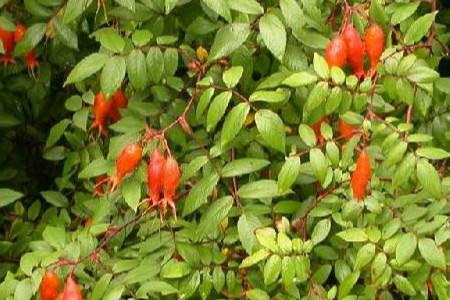
二、虫害
1、金龟子
养过这种植物的人应该在叶片上见过金龟子,常年种植的人可能会说这是一种健康的表现,代表植株并没有撒过药,可是我们应该知道,如果植物有一只金龟子那无关紧要。但是过多的虫害就是灾难了,金龟子喜食蔷薇的根茎、叶子。严重将影响花朵的产量和质量。
防治方法:可采用灯光、杨柳等方式吸引金龟子,从而减少其数量。

2、刺蛾
植物较为年长时,会很大程度吸引刺蛾,一般蔷薇的虫害时间主要集中在夏季炎热的夏季,最为严重的时期是夏末,气温高对刺蛾的发育其正作用。刺蛾会吃掉叶片,植物光合作用、生长发育的工具都无法具备,更无法成长,若是叶片在此期间得病,则这盆花可能损失过重,不幸死亡。
防治方法:冬季及时检查 是否有虫卵,应及时清楚掉虫卵。
0
0
文章
权问薇
2018年02月22日


一.养殖的方法
1家庭种的话,可以准备好培育芽苗的培养土,泥土的调配最好是使用园土加上腐叶土、细沙一起按照2:2:1调配,然后要消毒。消毒后的土可以避免苗期病虫害的威胁。
2把采集到的种子放在通风的干燥的地方储存,选择在冬天的12月份种在气温在2到8度的温室里面,到了第二年,种子就会长出芽苗来,到了3月份就可以移到比较大的盆子里面了。也可以在5月份采种子,立刻播种,这样很快就可以发芽了。
3播种之后的屋子内的温度一定要维持在15度到25度。

4等到小苗都长出来之后,要对温度进行特别的控制为了防止小苗的徒长,而且这个时候要注意光照的补充要充足,白天的温度要在15度,晚上的温度要在8度到10度,要令泥土稍微地干燥。
5等到小苗长出第一片叶子的时候就可以开始分开种了,底下的水要湿透。这个时候的温度就可以在白天维持20度,晚上维持15度左右。还可以适当地在泥土里面施一点已经腐熟的有机肥料促进它的成长。
6等到芽苗长出5片叶子的时候就可以定位种植了,每40株之间的空间要达到1平方米。
二.养殖的注意
1由于这种植物的抵抗能力非常强,所以在它的成长期里面不需要对它进行特殊的管理,不过在它的成长比较旺盛的季节,可以每隔7到10天给它施加一次有机肥料。
2这种植物容易惹来红蜘蛛侵害叶子,可以准备石硫合剂来喷杀红蜘蛛。
3这种植物会容易得半知菌感染,然后生叶斑病,如果不及时救治会引起大片的黑色斑,然后叶片会慢慢地枯黄然后凋零。所以一旦生病,要准备好药水喷叶面。

1
1
文章
Miss Chen
2018年02月22日

Description: This herbaceous perennial plant is up to 2' tall, branching occasionally to create a bushy appearance. The hairy stems are green initially, but often become brown when the plant matures. The alternate leaves are up to 3" long and ¼" across toward the base of the plant, becoming less than 1" long and 1/8" (3 mm.) across near the flowering stems. They are linear in form and have smooth edges, often with a fine pubescence. The lower leaves usually shrivel and fall off by the time the compound flowers bloom during the fall. These flowers are very numerous and have a daisy-like appearance. Each compound flower is a little less than ½" across, and consists of numerous yellow disk florets, which are surrounded by about 12 white ray florets. There is no noticeable floral scent. There are numerous needle-like green bracts on the flowering stems, giving this plant a heath-like appearance. The little seeds have tufts of white hairs, and are distributed by the wind. The root system is rhizomatous.
Cultivation: The preference is full sun and average to dry conditions. The soil can contain significant amounts of loam, clay, or gravelly material; alkaline soil is tolerated. This plant withstands drought. It often spreads vegetatively to form colonies, especially in open disturbed areas.
Range & Habitat: The native Heath Aster is found in most counties of Illinois, but it is absent from some counties in the western and SE areas of the state (see Distribution Map). Overall, it is occasional to locally common. Habitats include mesic to dry black soil prairies, gravel prairies, dolomite prairies, hill prairies, savannas, openings in dry rocky forests, limestone glades, areas along roadsides and railroads, and pastures. It can be found in both high quality habitats and disturbed areas.
Faunal Associations: A wide variety of insects are attracted to the flowers, including long-tongued bees, short-tongued bees, wasps, flies, butterflies, skippers, moths, beetles, and plant bugs. Bee visitors include honeybees, bumblebees, cuckoo bees, little carpenter bees, leaf-cutting bees, Halictid bees, plasterer bees, and Andrenid bees. Wasp visitors include thread-waisted wasps, bee wolves, spider wasps, sand wasps, paper wasps, Ichneumonid wasps, and Braconid wasps. Among the flies, are such visitors as bee flies, Syrphid flies, thick-headed flies, Tachinid flies, Muscid flies, and others. Various insects suck juices from the plant, including aphids, lace bugs, and plant bugs. The caterpillars of the butterfly Chlosyne nycteis (Silvery Checkerspot) feed on the foliage or flowers, as does the caterpillars of many moth species (see Moth Table). Wild Turkeys nibble on the seeds and foliage to a limited extent. Mammalian herbivores, including the White-Tailed Deer, Cottontail Rabbit, and various kinds of livestock, also feed on the tender growth of young plants occasionally, but are less likely to bother mature plants later in the year.

Photographic Location: The photographs were taken at Loda Cemetery Prairie in Iroquois County, Illinois.
Comments: The Heath Aster has a wide distribution, and there is some variability in regards to its size and appearance across different locations. Sometimes it will hybridize with other species of asters, such as Symphyotrichum novae-angliae. The Heath Aster differs from other asters with small white flowerheads primarily by its short, narrow leaves (never more than 3" long and ¼" across). Also, its flowerheads tend to be smaller in size and they have fewer ray florets (about 12) than many other aster species. A scientific synonym of this plant is Aster ericoides.
Cultivation: The preference is full sun and average to dry conditions. The soil can contain significant amounts of loam, clay, or gravelly material; alkaline soil is tolerated. This plant withstands drought. It often spreads vegetatively to form colonies, especially in open disturbed areas.
Range & Habitat: The native Heath Aster is found in most counties of Illinois, but it is absent from some counties in the western and SE areas of the state (see Distribution Map). Overall, it is occasional to locally common. Habitats include mesic to dry black soil prairies, gravel prairies, dolomite prairies, hill prairies, savannas, openings in dry rocky forests, limestone glades, areas along roadsides and railroads, and pastures. It can be found in both high quality habitats and disturbed areas.
Faunal Associations: A wide variety of insects are attracted to the flowers, including long-tongued bees, short-tongued bees, wasps, flies, butterflies, skippers, moths, beetles, and plant bugs. Bee visitors include honeybees, bumblebees, cuckoo bees, little carpenter bees, leaf-cutting bees, Halictid bees, plasterer bees, and Andrenid bees. Wasp visitors include thread-waisted wasps, bee wolves, spider wasps, sand wasps, paper wasps, Ichneumonid wasps, and Braconid wasps. Among the flies, are such visitors as bee flies, Syrphid flies, thick-headed flies, Tachinid flies, Muscid flies, and others. Various insects suck juices from the plant, including aphids, lace bugs, and plant bugs. The caterpillars of the butterfly Chlosyne nycteis (Silvery Checkerspot) feed on the foliage or flowers, as does the caterpillars of many moth species (see Moth Table). Wild Turkeys nibble on the seeds and foliage to a limited extent. Mammalian herbivores, including the White-Tailed Deer, Cottontail Rabbit, and various kinds of livestock, also feed on the tender growth of young plants occasionally, but are less likely to bother mature plants later in the year.

Photographic Location: The photographs were taken at Loda Cemetery Prairie in Iroquois County, Illinois.
Comments: The Heath Aster has a wide distribution, and there is some variability in regards to its size and appearance across different locations. Sometimes it will hybridize with other species of asters, such as Symphyotrichum novae-angliae. The Heath Aster differs from other asters with small white flowerheads primarily by its short, narrow leaves (never more than 3" long and ¼" across). Also, its flowerheads tend to be smaller in size and they have fewer ray florets (about 12) than many other aster species. A scientific synonym of this plant is Aster ericoides.
0
0
文章
Miss Chen
2018年02月22日

Description: This herbaceous vine is a summer annual about 2-6' long that branches occasionally. Its slender stems can climb by twining about adjacent vegetation; they are finely pubescent. Alternate trifoliate leaves occur at intervals along the stems. Each leaflet is about 1" long and 1/3" (8 mm.) across; it is oblong-lanceolate, smooth along the margins, and finely pubescent on both the upper and lower sides. Each trifoliate leaf has a long petiole about 1-2" long that is also finely pubescent; there is a pair of small lanceolate bracts at the base of each petiole. No tendrils are produced by this vine. At the base of the middle to upper leaves, a slender flowering stalk (peduncle) about 1-4" long is occasionally produced. Each stalk terminates in a dense cluster of 1-6 small flowers; usually only one flower in a cluster is in bloom at a time. Each flower is up to ¼" long; it has a pale pink to purplish pink corolla. This corolla has a typical pea-like structure that consists of a standard, keel, and enclosing wings. However, the narrow keel and its wings are somewhat unusual in that they curve upward in front of the standard, instead of remaining straight. This characteristic distinguishes the Strophostyles genus from many other members of the Bean family. The short tubular calyx of each flower is light green to purple and finely pubescent; it has 4-5 shallow teeth along its rim and a pair of small bracts (bracteoles) at its base. The pedicel of each flower is very short. The blooming period occurs from late summer into the fall and lasts about 1-2 months. Each flower is short-lived and lacks any noticeable floral scent. A fertile flower is replaced by a cylindrical seedpod about 1–1½" long that has a beaked outer tip. This seedpod is initially green, but becomes dark brown with maturity; it is finely pubescent to conspicuously hairy. Each seedpod contains a few large seeds that are oblongoid in shape; they become dark, shiny, and hairless with maturity. The root system consists of a taproot. This vine spreads by reseeding itself.
Cultivation: The preference is full or partial sun, mesic to dry conditions, and sandy soil. Conventional garden soil containing loam or clay-loam is tolerated if there is not too much competition from taller plants. The seeds may remain in the ground for several years before they germinate; scarification of the seeds can speed up this process. The roots add nitrogen to the soil by forming a symbiotic association with rhizobial bacteria.
Range & Habitat: The native Small Fuzzy Bean occurs occasionally in southern Illinois and in sandy areas of central and northern Illinois, otherwise it is uncommon or absent (see Distribution Map). Habitats include open rocky woodlands, open sandy woodlands, sandy savannas, glades, thickets, sand prairies, and sandy fields. This species is usually found in rather dry areas with sparse ground vegetation. Occasional wildfires are probably beneficial in removing competition from woody vegetation and other tall plants.

Faunal Associations: The nectar of the flowers occasionally attracts bees, including bumblebees, Leaf-Cutting bees (Megachile spp.), and Dagger bees (Calliopsis spp.). The extra-floral nectaries attract ants and Halictid bees. The caterpillars of the following skippers occasionally feed on the foliage of Strophostyles spp. (Fuzzy Beans): Epargyreus clarus (Silver-Spotted Skipper), Thorybes bathyllus (Southern Cloudywing), and Urbanus proteus (Long-tailed Skipper). Some leaf beetles feed on the foliage as well, including Cerotoma trifurcata (Bean Leaf Beetle), Sumitrosis ancoroides, and Sumitrosis pallescens; the larvae of the latter two species are leaf-miners. The Mourning Dove and Bobwhite Quail eat the seeds of Fuzzy Beans, while the foliage is readily eaten by cattle, deer, and other mammalian herbivores.
Photographic Location: The wildflower garden of the webmaster in Urbana, Illinois. The dainty foliage of Aster oblongifolius (Aromatic Aster) can be observed in the background of the photographed trifoliate leaf.

Comments: This rather ordinary-looking vine has small flowers that are short-lived. Other common names for this species are Small Wild Bean and Small Woolly Bean. Two other vines in this genus that occur in Illinois are the following: Strophostyles helvola (Large Fuzzy Bean) and Strophostyles umbellata (Perennial Fuzzy Bean). As the common name implies, Large Fuzzy Bean is a more robust vine with longer stems and larger leaves; the leaves of this species are sometimes lobed. It is also a summer annual, but prefers more moist habitats. Similarly, the Perennial Fuzzy Bean is more robust with longer stems and larger leaves; this perennial vine is restricted to southern Illinois. These latter two species have slightly larger flowers (greater than ¼" in length) than the Small Fuzzy Bean (up to ¼" in length); they all have keels on their flowers that curve upward and their seedpods are finely pubescent to conspicuously hairy. While the mature seeds of Small Fuzzy Bean are shiny and hairless, the mature seeds of Large Fuzzy Bean and Perennial Fuzzy Bean are usually mealy-pubescent.
Cultivation: The preference is full or partial sun, mesic to dry conditions, and sandy soil. Conventional garden soil containing loam or clay-loam is tolerated if there is not too much competition from taller plants. The seeds may remain in the ground for several years before they germinate; scarification of the seeds can speed up this process. The roots add nitrogen to the soil by forming a symbiotic association with rhizobial bacteria.
Range & Habitat: The native Small Fuzzy Bean occurs occasionally in southern Illinois and in sandy areas of central and northern Illinois, otherwise it is uncommon or absent (see Distribution Map). Habitats include open rocky woodlands, open sandy woodlands, sandy savannas, glades, thickets, sand prairies, and sandy fields. This species is usually found in rather dry areas with sparse ground vegetation. Occasional wildfires are probably beneficial in removing competition from woody vegetation and other tall plants.

Faunal Associations: The nectar of the flowers occasionally attracts bees, including bumblebees, Leaf-Cutting bees (Megachile spp.), and Dagger bees (Calliopsis spp.). The extra-floral nectaries attract ants and Halictid bees. The caterpillars of the following skippers occasionally feed on the foliage of Strophostyles spp. (Fuzzy Beans): Epargyreus clarus (Silver-Spotted Skipper), Thorybes bathyllus (Southern Cloudywing), and Urbanus proteus (Long-tailed Skipper). Some leaf beetles feed on the foliage as well, including Cerotoma trifurcata (Bean Leaf Beetle), Sumitrosis ancoroides, and Sumitrosis pallescens; the larvae of the latter two species are leaf-miners. The Mourning Dove and Bobwhite Quail eat the seeds of Fuzzy Beans, while the foliage is readily eaten by cattle, deer, and other mammalian herbivores.
Photographic Location: The wildflower garden of the webmaster in Urbana, Illinois. The dainty foliage of Aster oblongifolius (Aromatic Aster) can be observed in the background of the photographed trifoliate leaf.

Comments: This rather ordinary-looking vine has small flowers that are short-lived. Other common names for this species are Small Wild Bean and Small Woolly Bean. Two other vines in this genus that occur in Illinois are the following: Strophostyles helvola (Large Fuzzy Bean) and Strophostyles umbellata (Perennial Fuzzy Bean). As the common name implies, Large Fuzzy Bean is a more robust vine with longer stems and larger leaves; the leaves of this species are sometimes lobed. It is also a summer annual, but prefers more moist habitats. Similarly, the Perennial Fuzzy Bean is more robust with longer stems and larger leaves; this perennial vine is restricted to southern Illinois. These latter two species have slightly larger flowers (greater than ¼" in length) than the Small Fuzzy Bean (up to ¼" in length); they all have keels on their flowers that curve upward and their seedpods are finely pubescent to conspicuously hairy. While the mature seeds of Small Fuzzy Bean are shiny and hairless, the mature seeds of Large Fuzzy Bean and Perennial Fuzzy Bean are usually mealy-pubescent.
0
0
文章
Miss Chen
2018年02月22日

Description: This herbaceous perennial plant is ½–2½' tall and usually unbranched. The central stem is 4-angled, usually with scattered hairs along the ridges, but not the sides (see Stem Photo). The opposite leaves are up to 3½" long and 1"Whorls of Flowers across. They are usually lanceolate or narrowly ovate, with serrate or crenate margins. The petioles of the lower leaves are about ¼" or slightly longer, while the upper leaves have shorter petioles or are sessile. Both the upper and lower surfaces of the leaves are hairless or nearly so – if hairs are present, they are most likely to occur along the lower mid-vein of the leaves. The central stem terminates in a spike-like inflorescence that has whorls of flowers at intervals along its length. This inflorescence can vary from 2-8" in length. The tubular corolla of each flower is about 1/3" long and divided into 2 lips. The hairy upper lip functions as a protective hood, while the lower lip is divided into 3 lobes (a central lobe and two smaller side lobes), which functions as a landing pad for visiting insects. The flowers are light pink or white, often with rosy pink splotches within the throat. The green calyx is hairless and at least half as long as the tube of the corolla (not including the lips). It is divided into 5 triangular segments that curl outward as the ovaries mature. The blooming period occurs during the summer and lasts about 1-2 months. Each flower is replaced by 4 black nutlets that are oblong in shape. The root system consists of a taproot and rhizomes. This plant often forms vegetative colonies, like many other members of the Mint family.
Cultivation: The preference is partial sun and moist conditions. This plant also tolerates light shade and full sun. The soil should contain sufficient organic material to retain moisture. If this plant dries out, the leaves have a tendency to turn yellow or brown, and the entire plant may die.
Range & Habitat: Smooth Hedge Nettle occurs in most counties of Illinois (see Distribution Map), where it is native. This plant is occasional in southern and central Illinois, but uncommon or absent in the northern counties. Habitats include ravines in floodplain forests, moist meadows along rivers or woodlands, thickets, and various kinds of wetlands, including swamps, seeps, and ditches. It can be found in either high quality habitats or rather degraded sites.
Faunal Associations: Primarily long-tongued bees pollinate the flowers, where they seek nectar primarily. Short-tongued bees sometimes collect pollen, while flower flies feed on the pollen, but they are not very effective pollinators. Occasionally butterflies or skippers may visit the flowers, but they aren't very effective at pollinating the flowers either. The bitter foliage of this and other Stachys spp. is not often consumed by mammalian herbivores.

Photographic Location: A swampy area of Busey Woods in Urbana, Illinois.
Comments: This is a typical member of the Mint family. It is easy to overlook, because this Hedge Nettle sp. tends to be rather small-sized and non-descript, almost looking like a lanky Prunella vulgaris (Self-Heal) at first glance. Identifying Smooth Hedge Nettle correctly can be rather tricky, so here are some of the key features to look for: 1) The calyx is hairless; 2) the petioles of the lower leaves are usually ¼" or longer, and 3) there are hairs on the ridges of the 4-angled central stem, but not on the sides. There is also a hairy form of this plant, referred to as Stachys tenuifolia hispida by some authorities and Stachys hispida by others, that also occurs in Illinois. It has foliage that is more hairy, and there are also some hairs along the edges of the calyx of each flower. However, it is similar to Smooth Hedge Nettle in that the central stem has hairs along the ridges, but not on the sides.
Cultivation: The preference is partial sun and moist conditions. This plant also tolerates light shade and full sun. The soil should contain sufficient organic material to retain moisture. If this plant dries out, the leaves have a tendency to turn yellow or brown, and the entire plant may die.
Range & Habitat: Smooth Hedge Nettle occurs in most counties of Illinois (see Distribution Map), where it is native. This plant is occasional in southern and central Illinois, but uncommon or absent in the northern counties. Habitats include ravines in floodplain forests, moist meadows along rivers or woodlands, thickets, and various kinds of wetlands, including swamps, seeps, and ditches. It can be found in either high quality habitats or rather degraded sites.
Faunal Associations: Primarily long-tongued bees pollinate the flowers, where they seek nectar primarily. Short-tongued bees sometimes collect pollen, while flower flies feed on the pollen, but they are not very effective pollinators. Occasionally butterflies or skippers may visit the flowers, but they aren't very effective at pollinating the flowers either. The bitter foliage of this and other Stachys spp. is not often consumed by mammalian herbivores.

Photographic Location: A swampy area of Busey Woods in Urbana, Illinois.
Comments: This is a typical member of the Mint family. It is easy to overlook, because this Hedge Nettle sp. tends to be rather small-sized and non-descript, almost looking like a lanky Prunella vulgaris (Self-Heal) at first glance. Identifying Smooth Hedge Nettle correctly can be rather tricky, so here are some of the key features to look for: 1) The calyx is hairless; 2) the petioles of the lower leaves are usually ¼" or longer, and 3) there are hairs on the ridges of the 4-angled central stem, but not on the sides. There is also a hairy form of this plant, referred to as Stachys tenuifolia hispida by some authorities and Stachys hispida by others, that also occurs in Illinois. It has foliage that is more hairy, and there are also some hairs along the edges of the calyx of each flower. However, it is similar to Smooth Hedge Nettle in that the central stem has hairs along the ridges, but not on the sides.
0
0



